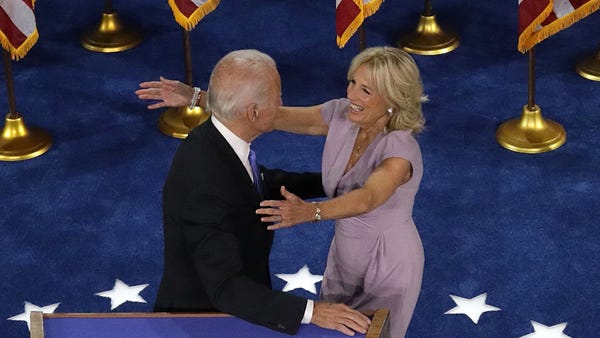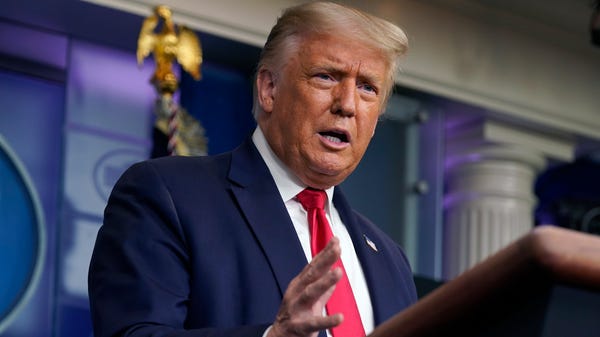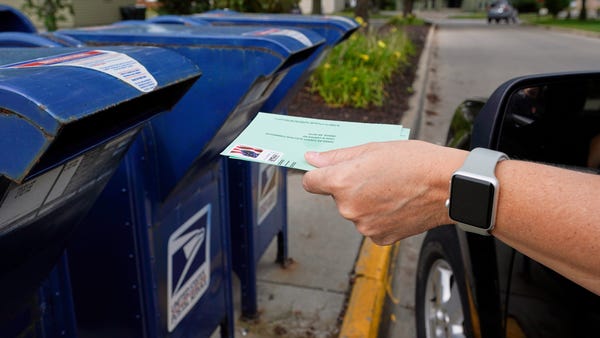 |
| |
| |
| |
| |
| |
| |
| WASHINGTON - The Senate voted along nearly party lines to confirm Judge Amy Coney Barrett to the Supreme Court on Monday, completing a sprint to place her on the high court just days before Election Day and solidifying a 6-3 conservative majority on the bench. |
| Barrett was confirmed by a slim 52-48 vote. One Republican, Susan Collins of Maine, joined the chamber's 47 Democrats in voting against the nomination. She is set to be sworn in at a White House ceremony Monday evening. |
| Barrett, 48, will become the fifth woman to serve on the Supreme Court, filling the vacancy left by Justice Ruth Bader Ginsburg, who died in September. Her swearing-in means she'll likely be able to hear cases as early as next week, including a challenge to the Affordable Care Act that Democrats worry will upend the health care of millions. |
| The vote caps a confirmation process that - while at times respectful - fueled intense partisanship in the Senate, with the added drama of happening in the middle of a global pandemic and weeks before a presidential election. |
| Senators debated Barrett's nomination over the weekend with both sides reiterating arguments sounded throughout the confirmation process in the lead-up to the final vote. For the final 30 hours of debate, senators stayed overnight from Sunday evening into Monday, taking turns holding the floor. Democrats warned of the consequences of Barrett's confirmation for hot-button issues like the Affordable Care Act and election disputes, while Republicans lauded Barrett's qualifications and touted her pending confirmation as a key accomplishment of President Donald Trump and Senate Republicans that Democrats would be unable to erode. |
| The White House is preparing a public swearing-in ceremony later Monday evening after her expected approval by the Senate, officials said, allowing Barrett to quickly join the bench and weigh in on a host of crucial questions set to come before the high court in the coming days. |
| 'Totally irresponsible':Dems criticize Pence presiding over Amy Coney Barrett vote after aides contract COVID-19 |
| Pelosi: Nancy Pelosi says she will seek another term as speaker if Democrats keep control of the House |
| The fight over filling Associate Justice Ruth Bader Ginsburg's spot on the court started only hours after the liberal icon died Sept. 18. Trump and Senate Majority Leader Mitch McConnell were left with the opportunity to appoint another conservative justice to the court just weeks before a contentious election that could put the White House and Senate in Democrats' hands. |
| Before Barrett was named Trump's nominee in late September, Democrats urged Trump and Republicans to wait on replacing Ginsburg, saying the winners of the Nov. 3 election should determine which justice will get a lifetime appointment to the nation's highest court. Democrats repeatedly pointed out that Senate Republicans would be going back on their word if they held a confirmation vote so close to an election, citing their 2016 refusal to consider President Barack Obama's nomination Merrick Garland about 8 months before the 2016 election. |
| Pack the court? Battles between Republicans and Democrats fuel clash over Supreme Court's future |
| Despite Democratic opposition - which included concerns over holding a confirmation process amid the COVID-19 pandemic - Republicans pushed forward. Barrett quickly started meeting with senators, confirmation hearings were scheduled, and Senate Republicans charted out a path to confirm Barrett before Election Day. |
| Barrett's four days of confirmation hearings passed without much of the drama Justice Brett Kavanaugh's proceedings had. Most senators announced their intention to support or oppose Barrett's nomination, or that of any nominee, by the end of September , taking much of the suspense out of the process. |
| More: Senate committee OKs Amy Coney Barrett. Here's what happens next in her Supreme Court confirmation |
| Recognizing they did not have the votes to block Barrett's nomination or significantly delay the process, Senate Democrats opted to highlight what they said would be the consequences of her confirmation to the Supreme Court, peppering her with questions during her confirmation hearings about her views on abortion, the Affordable Care Act and other controversial issues. The judge, however, largely declined to answer the questions, saying she would not comment on questions that could come before the court. |
| When the Senate Judiciary Committee, which oversaw her vetting process, took its vote to send her nomination to the full Senate, Democrats boycotted the vote and instead placed pictures of people on their chairs whom they said could be affected by the overturning of the Affordable Care Act. |
| Democrats repeatedly called the Judiciary Committee proceedings "illegitimate" and a "sham," though Sen. Dianne Feinstein, the top Democrat on the committee, faced criticism from progressives for her praise of the proceedings. |
| Barrett could be sworn in as early as Monday evening and could take part in contentious Supreme Court cases on the Affordable Care Act or disputes that may arise after the election. |
| Barrett is required to take two oaths before she can officially serve on the high court. Typically, Supreme Court Chief Justice John Roberts will swear in a new associate justice and a ceremonial service is held at the White House. |
| The last addition to the Supreme Court - Kavanaugh - was sworn in by Roberts just hours after the Senate confirmed his nomination. Because the high court was in the middle of its term, the quick process allowed Kavanaugh to begin work immediately. |
| More: Amy Coney Barrett's Supreme Court hearings lacked the drama that Brett Kavanaugh's proceedings had. Here's why. |
| More: Contact tracing and visualizing the people exposed to COVID-19 by Trump outbreak |
| Trump is planning a ceremony as early as Monday night, just hours after the Senate vote, where Justice Clarence Thomas will administer Barrett's swearing-in, officials said. A ceremony is not required for Barrett to become a member of the high court but is typically held to celebrate a new justice. |
| When Trump announced Barrett as his nominee in a September Rose Garden ceremony, several people there - including the president - later tested positive for the coronavirus. |
| Several Senate Republicans told reporters they did not plan to attend the White House event, pointing to scheduling conflicts and plans to return to their home states. |
| Sen. Todd Young, R-Ind., said he had accepted an invitation to be at the event but had been "reconsidering" attending. When asked if the change was because of coronavirus concerns, he said it had "to do with a lot of factors." |
| The ceremony could slip to Tuesday if the Senate vote is somehow delayed, said an official familiar with the planning, speaking on condition of anonymity because the Senate has not yet confirmed Barrett. |
| The court will be in session starting Nov. 2 and will hear a case concerning the LGBTQ community and religious freedoms, along with a highly anticipated case that could decide the future of the Affordable Care Act. |
| Contributing: David Jackson |
| |
| |
| MUST-READ ELECTIONS 2020 NEWS |
| |
| |
| |






No comments:
Post a Comment